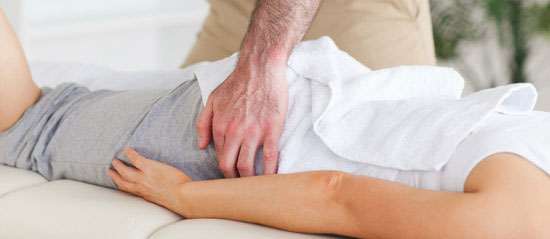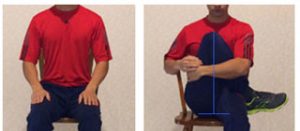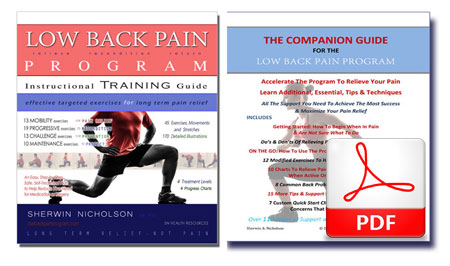2 Vital stretches to help relieve piriformis syndrome pain
SN Health Resources | Updated May 4, 2020

Does your pain feel deep in the sides of your buttock?
Does it get worse with sitting?
You may have Piriformis syndrome.
Is it sore or tender when you put pressure on it? That’s another sign. Usually applying deep pressure with the knuckle of your thumb can provide some temporary relief. Pressure helps, but it won’t stop the problem from coming back.
This syndrome feels like it is coming deep within the buttocks and starts with the piriformis muscle. A lot of the time, it travels down the back of your thigh and then to the foot. Sitting down for too long will always aggravate this muscle, causing you to prefer to stand instead.
Because we spend so much time sitting at work, home or while driving, we are rarely giving ourselves the opportunity to relieve this condition. In fact, most of time, it’s our lifestyle and career choices that are the source of the problem.
The piriformis is that large flat muscle along your buttock that is very prone to weakness and tightening, so taking care of it can seem like a constant battle.
We cause it because of lack of exercise, stretching, compression from sitting, or even overuse which causes swelling.
When you allow it to become this condition, it gets very inflamed, putting pressure on the large sciatic nerve immediately beneath it. Your irritated sciatic nerve is what is responsible for the discomfort you have.
Solutions You Need:
Below, are some of best treatments for your pain. To prevent this muscle from becoming weak and irritable, it needs routine lengthening and strengthening. If your piriformis muscle is already healthy, it can quickly become a problem if you spend a lot of time sitting on it.
Before you begin:
- Consult with your doctor to ensure an accurate diagnosis (vs. sciatica)
- Avoid or minimize activities that worsen this condition
- Use anti-inflammatories only when necessary
- Follow glute stretches carefully and routinely
- Hold your stretch for as long as comfortably possible
- Practice as often as you can
- Do not avoid stretching if it hurts in this region as soreness is part of the healing process
Follow these exercises to help you:
These exercises are very effective for glute/buttock pain.
Be aware that because you are trying to re-lengthen and mobilize a muscle that is already weak and tight, you will feel sore during and after the movement. This is normal, so do not be discouraged by any soreness as it will get better as the muscle lengthens.
True stretching comes with the amount of time spent holding the stretch. Less than 30 seconds is NOT enough time for stretching any muscle. The muscle is only resisting your efforts for 30 seconds. Allow more than 30 to over 2 full minutes for the muscle to effectively relax and lengthen.
Try the Seated Leg to Chest Exercise
 This exercise will easily lengthen the piriformis. It is easy to perform and can be done while you are at work or watching TV.
This exercise will easily lengthen the piriformis. It is easy to perform and can be done while you are at work or watching TV.
You will immediate feel a pull on the muscle. It will initially be very difficult to raise as high as in the image on the right. This may take days to weeks to achieve. Be patient as your degree of tightness relies on your commitment to holding your leg to your body.
Follow the full instructions on exactly how to perform this Seated Leg to Chest. They will help prevent you from using poor technique and will protect your lower back.
Seated Leg Cross
This exercise requires more intense effort to be effective. It actively lengthens both sides at the same time. Depending on which leg is on top, the intensity of the stretch will be experienced. This will initially require time to achieve the position indicated in the image on the right side.
To help, you can use pillows underneath the buttocks to help support you. Do not force this movement . Take your time and ease into it slowly.
. Take your time and ease into it slowly.
Follow the full instructions on exactly how to perform the Seated Leg Cross . The instructions will help prevent you from using poor technique and will give you lasting relief.
The Low Back Pain Program teaches an effective, long-term program designed to help people who suffer from acute and chronic lower back pain. It uses a Four stage system with specific, targeted exercises to help you have relief. Many of these exercises and stretches target Piriformis syndrome as the hip muscles play cause lower back pain and sciatic nerve injury.
If you are hurting and are in need of a proven, structured, plan for relief: Search this site for more valuable help and Download the eBook to start today.
“Of the exercises are simple and quick and I can complete at work while sitting at my back. Overall this is a good book to read if you truly are interested in exercises to relieve lower back pain.”
“I’ve only been doing this program for a short time and have noticed that I don’t have as many issues sitting up to get out of bed; I would say that I am a satisfied customer thus far.”
A great exercise for your hip discomfort
Do this if you have buttocks pain
Follow these excellent exercises for relief
References:
- Delavier Stretching Anatomy – RA781.63D4513, 2010. Frederic Delavier. Human Kinetics Publishing.
- Persistent back pain and sciatica in the United States: patient characteristics. – Long DM1, BenDebba M, Torgerson WS, Boyd RJ, Dawson EG, Hardy RW, Robertson JT, Sypert GW, Watts C. J Spinal Disord. 1996 Feb;9(1):40-58. Author information
- Lower back pain – Eric R. Castillo Daniel E. Lieberman Evol Med Public Health (2015) 2015 (1): 2-3. DOI: https://doi.org/10.1093/emph/eou034 Published: 10 January 2015 https://academic.oup.com/emph/article/2015/1/2/1795271/LBP

